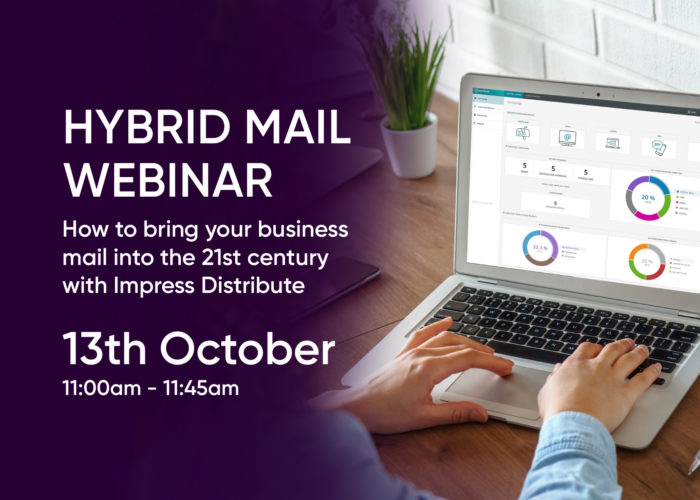July 15, 2021
The expected surge in email marketing as businesses try to get back to normal following a sustained period of remote working will undoubtedly create ‘inbox blindness’, as people struggle to dedicate the time and effort to wade through the hundreds of daily emails they receive.
For this reason, marketing through direct mail will undoubtedly receive a boost in the months ahead as more businesses recognise the benefits of printing and mailing their own engaging communications, personalised for each recipient.
To some people, direct mail may seem like an outdated way of reaching out to prospects, especially in the digital age when there are so many other internet-based alternatives, such as email and social media marketing.
However, whilst email has an average click-through rate of about 2-3% and a response rate of around 0.6%, direct mail enjoys a response rate of 5.3% for mail sent to houses and 2.9% for prospect lists, proving that it is still an effective way of engaging an audience.
Despite the statistics showing that direct mail is more engaging and yields better response rates, there are still a lot of businesses ignoring this and investing all of their resources into developing a polished digital strategy.
Whilst it may be tempting to follow the crowd, this is actually the perfect opportunity for your business to stand out from the competition, as your thoughtful direct mail campaign is likely to stick in the memory of the recipient and make a good impression with your audience.
There is often a misconception that because direct mail has been around for so many years, it is very limited in what it can do compared with other digital methods.
However, with a clear strategy in mind, direct mail can be combined with other savvy marketing techniques to enhance engagement and boost brand awareness. For example, your direct mail could include a QR code that when scanned takes the recipient to a video promoting your goods and services.
Don’t worry about recipients being based at home either, most organisations have provisions in place for re-directing mail, scanning and emailing the content or keeping the mail for collection on the days the recipient is in the office. So make it bold and get in touch directly.
This variety and scope for creative and engaging campaigns makes direct mail marketing an exciting option that prospects appreciate and are more likely to respond positively towards.
No matter what type of campaign your business is running, the level of success you experience depends largely on the quality of the output. If your business is making the effort to organise a direct mail campaign, then it is important to do it justice by ensuring the quality of what you are sending is up to scratch.
Whilst most businesses have access to printers, they may not have been switched on for a while or been used for anything other than printing simple documents with minimal artwork and images.
Before printing your marketing collateral and making arrangements to send it out, you should first assess your existing equipment and decide whether or not you need to upgrade before proceeding.
And the friendly experienced specialists within the Dataquest Print Services team are available to undertake a free print audit for you, to identify weak spots in your printing options and where simple improvements can be made to upgrade what you have, especially if direct mail is part of your future. As it definitely should be.
The important thing is to understand your current print workflow and the speeds, running costs, space and daily usage of your existing models. Once this information is known, we can tailor a solution that leverages the best of multi-function printers to support your ambition.
If you’d like professional advice and help with finding a suitable solution that meets the unique requirements of your business, then please get in touch on 0207 392 8886 or email [email protected] and discover the Dataquest difference.

Read full story

Read full story

Read full story

Read full story

Read full story

Read full story

Read full story

Read full story

Read full story

Read full story